Each year thousands of people pack up their gear, put out their “gone fishing” sign or set their out-of-office email response to a fishing emoji, and head to the Oregon coast. Being out on the salty sea reeling in some rockfish or pulling in some Dungeness crab is a beloved pastime of both coastal locals and visitors alike.
Some fishers may have found their usual fishing spot closed after marine reserve implementation. These fishers could change their behavior, by either stopping fishing altogether or by finding a new fishing spot.
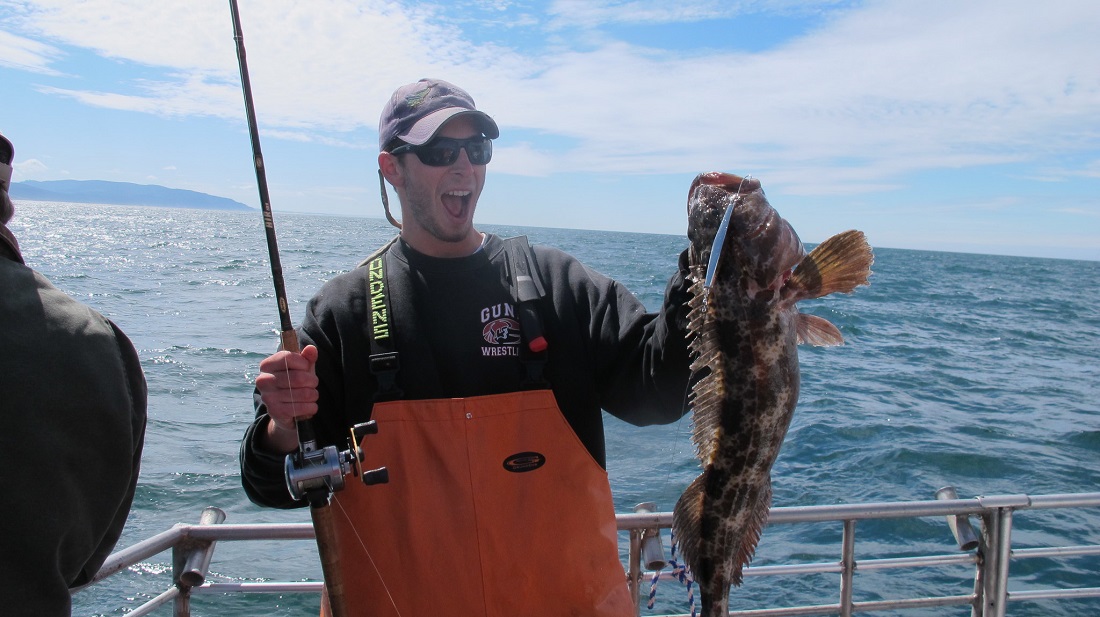
To find out if fishing behavior has changed after marine reserve implementation, we looked at ODFW’s sales of daily fishing licenses. Since ODFW doesn’t require a special endorsement for marine fishing, we used where the license was purchased to determine ocean fishing intent. If the license was purchased in a town less than a 20-mile drive from the ocean, we thought there was a good chance this fisher would be doing some marine fishing. Out of all the daily licenses purchased in coastal towns, we calculated the proportion of licenses purchased in towns near marine reserves. If people stopped fishing because their fishing spot was closed or if they moved to a new spot to fish, this change should be reflected by that proportion decreasing.
A LOOK AT LICENSE SALES ON THE COAST
The figures below show the proportion of total coastal license sales, for a daily fishing license, that happened in towns near each marine reserve, from 2006 to 2018. These are monthly data points, so you can see the seasonal variation in the data. The red dashed line on each figure indicates the year the marine reserves were implemented.
The first figure shows the coastal license sale proportion for towns near Redfish Rocks Marine Reserve (e.g., Port Orford) and Otter Rock Marine Reserve (e.g., Depoe Bay). These two reserves were implemented in 2012. You can see that the proportion is trending downward from 2006 to around 2013 and then begins trending back upward through 2018.
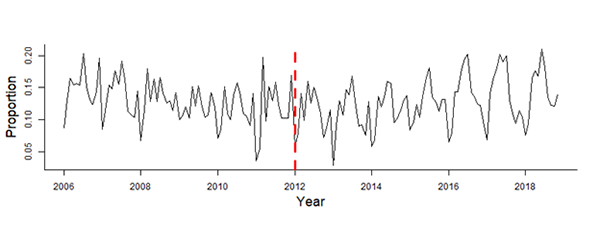
The second figure is for towns near Cascade Head Marine Reserve (e.g., Lincoln City) and Cape Perpetua Marine Reserve (e.g., Yachats). These two reserves were implemented in 2014. This figure shows a fairly consistent trend across the years with some strong seasonal fluctuations.
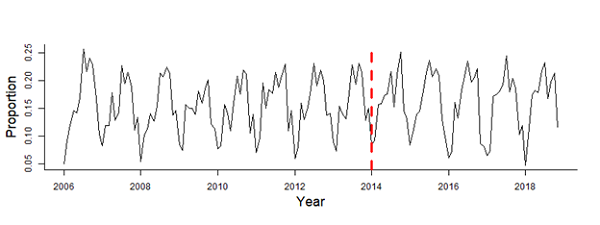
The third figure is for towns near Cape Falcon Marine Reserve (e.g., Garibaldi). This reserve was the only, and final, reserve to be implemented in 2016. It’s easy to see here that license sales in towns near Cape Falcon have decreased relative to the rest of the coast over the past 15 years.
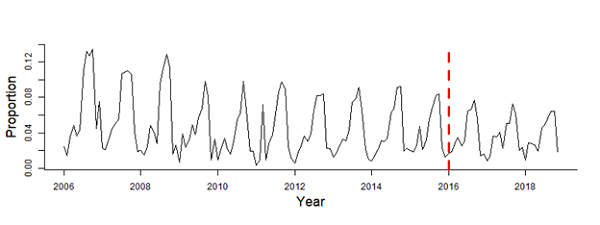
NO SIGNIFICANT IMPACTS ON COASTAL LICENSE SALES
By looking at these figures we can see some general trends in these data, but there do not appear to be any strong trends associated with marine reserve implementation. To look at these data through a more analytical lens, we conducted a statistical test called an intervention ARIMA time series analysis. This test confirmed what we saw with the figures; that there are no significant marine reserve impacts on coastal license sales in towns near marine reserves.
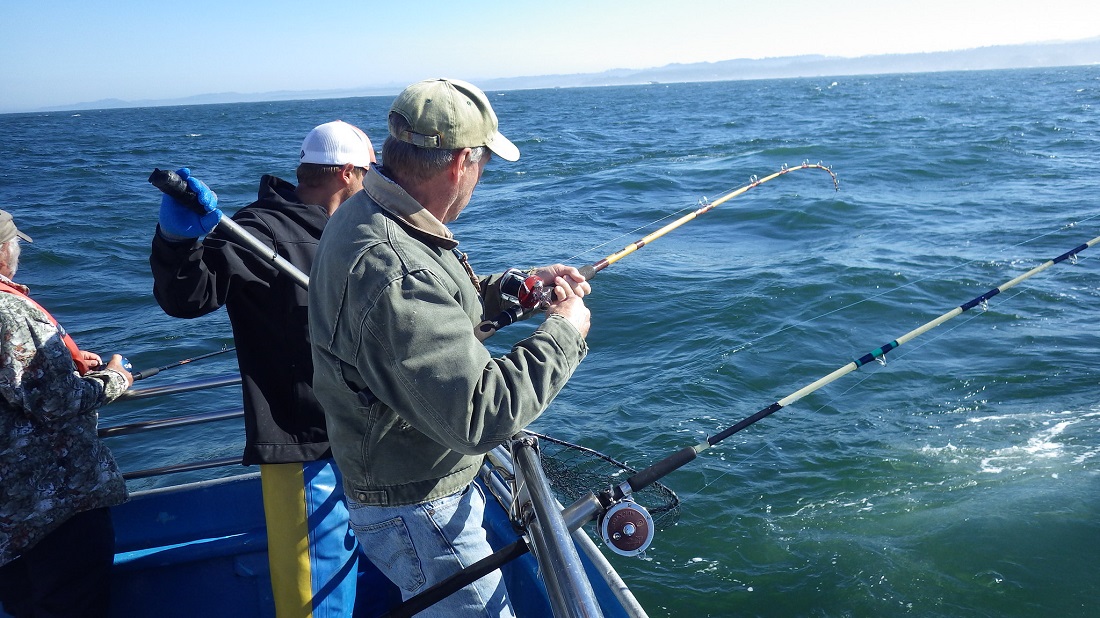
There are many potential explanations for these results. One possibility is that displaced fishers have started fishing right next to the marine reserve, therefore they still launch from the same port and buy their license in the same town. Another possibility is that fishers purchase their licenses in the same towns they always have, but they now drive further to fish. Another possibility is that most fishers weren’t displaced from marine reserve implementation, so there has been no change to their behavior.
FISHER INTERVIEWS & SURVEYS
HELP GIVE A MORE COMPLETE PICTURE
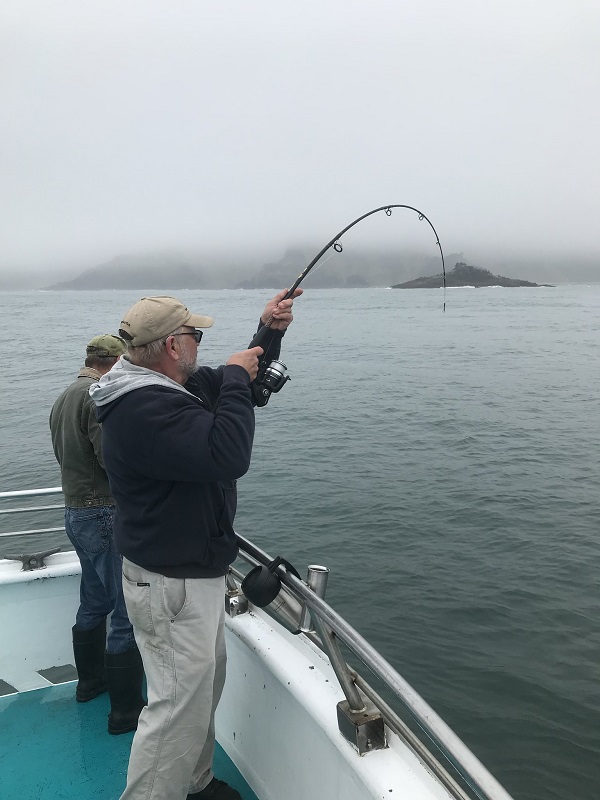
From these data we can’t determine the reason we don’t see an impact from marine reserve implementation on recreational fishing license sales. This is why it’s important that we couple data like this with interviews and surveys of actual fishers to get a more complete picture. Looking at the numbers is just one of the many ways our team is investigating potential marine reserve effects.
Explore more Human Dimensions Research
